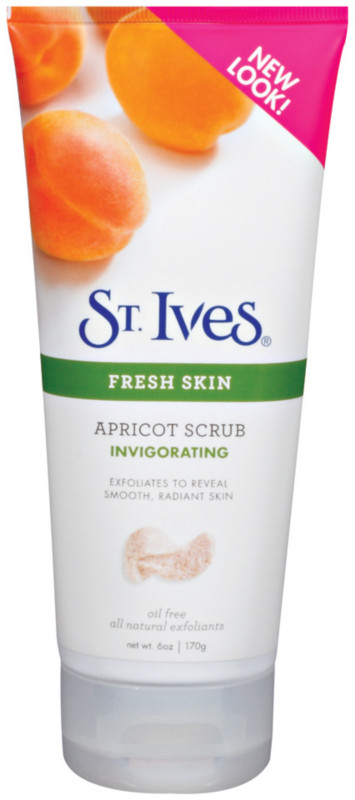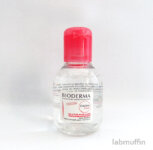I’ve done a lot of posts on skincare products I love… now, for something a bit different, here are some that I really hate and would only recommend to people I don’t like. So if I ever recommend these to you… it’s not me, it’s you. I just don’t see our relationship working out.
Coffee Scrubs
Coffee scrubs are made from coffee grounds, which is literally the stuff you chuck into the bin after making coffee. Now I’m sure there’s a little bit of work involved in making sure it doesn’t mould away in the packet, but essentially you’re buying rubbish at $30 for a small bag.
How can they charge this much, you ask? Well, it’s because they usually claim to get rid of cellulite. This is a bald-faced lie, because apart from the fact that you can’t actually get rid of cellulite, one application of the amount of caffeine required to make cellulite look a little better equates to 2.1 kg of coffee grounds, left on your skin for hours. Any improvement you get is probably mostly a combination of massage, exfoliation and placebo, which really shouldn’t cost that much.
Coffee scrubs are also messy as hell – unlike sugar and salt scrubs, they don’t dissolve in water so gritty black specks will lurk in unexpected places forever. I’m still finding bits of coffee grounds under my soap despite rinsing my entire shower down with vinegar the one time I tried one.
I suppose there’s nothing really harmful about coffee scrubs, really. What pisses me off is mostly just the SHEER AUDACITY of charging so much for a product that’s worse than salt mixed with a bit of oil (about $1.10 a kg, if you shell out for the nice oil). It’s more expensive than a whole bunch of other great exfoliants, and it’s basically bagged up garbage. I wish I’d thought of it.
What you should use instead: Salt + oil, or a leave-on anti-cellulite caffeine cream.
Apricot Scrubs with Shell Bits
First off, physical exfoliation is not the devil. It’s a great thing to use in conjunction with chemical exfoliants. But apricot scrubs containing ground walnut shell… that’s a different matter entirely.
As far as I can tell with my trusty literature review tools, there isn’t any evidence that they cause microtears which harbour bacteria (and I have no idea how that rumour started, but if you know anything about it I’d love to hear from you!), and there are many beneficial products and procedures with harder particles (hello microdermabrasion). But maybe half of the “skincare-naive” people who ask me about their skin problems have this on their bathroom shelf, and they use way too much pressure when scrubbing, and do it way too often (for some reason people feel the need to use it once a day). This sort of treatment usually starts by giving you a nice glow, but it’s unsustainable and quickly leads to sensitive, dehydrated, compromised skin that feels rough and is prone to breakouts. Of course, the obvious thing to do is to use more of the product to get that nice glow back, but it’s a downward spiral from there.
I don’t think St Ives deserves to be sued, but I also wouldn’t lose any sleep if apricot scrubs disappeared. (Also, why are they all called apricot scrubs instead of walnut scrubs?)
What to use instead: Any gentler physical exfoliant: konjac sponges, sugar scrubs, cleansing brushes. If you don’t already have an exfoliation routine in place, I’d recommend setting one up.
Soaps for the Face
True or “natural” soaps that is, made from lye or caustic potash and fats or oils. This includes products like African black soap and Castille soap. Soap is bad news for your face for a couple of reasons:
- It’s impossible for soap to work at a pH lower than around 9.5, which is unfortunate because your face has a pH of 4-6, and high pH will disrupt your skin’s ability to stay intact
- Soap’s structure (straight tail, small head group) makes it awesome at messing up the proteins in your skin
Some people with tolerant skin will be able to handle soap on their face, and most people can use it on tougher body skin with no big dramas, but a lot of companies that sell soap as facewash go for the “gentle, great for sensitive skin, BECAUSE IT’S NATURAL” angle.
NO.
If your skin is sensitive, soap is not great for it (dehydration, breakouts and roughness galore), and soap isn’t much more natural than gentler cleansing ingredients anyway. Soap is fats and oils which have been reacted to turn it into something else entirely, much like how plastic is made by reacting dead dinosaurs.
What you should use instead: A gentle face cleanser that’s formulated with surfactants made for mildness. Check out this gentle cleansing guide for tips on how to pick a good product and some suggestions.
Hypoallergenic Natural Products Loaded with Essential Oils
On a similar note, the “gentle, great for sensitive skin, BECAUSE IT’S NATURAL” brigade are also really fond of jamming essential oils into products to somehow make them less reactive. Which is entirely the wrong direction to go, because fragrance is one of the things that people with sensitive skin are frequently sensitive to, and guess what – essential oils are fragrant (and plant extracts usually are too). In fact, many synthetic fragrances are just essential oils with some chemicals taken out. That’s why a whole bunch of “natural” skincare products have a list of chemicals at the end of their ingredients, like linalool, benzyl alcohol, geraniol and coumarin – these ingredients known to cause allergies in susceptible people are usually hidden in essential oils and plant extracts, but EU regulations require that they be listed.
Sure, there are some plant extracts that are great for most sensitive skin (oatmeal, for example), but for the most sensitive skin, you’ll want plain, uncomplicated ingredients like petroleum jelly that have been tested in tons of clinical studies, and these are usually going to be synthetic.
(Side note: my skin is pretty tolerant to most things, but the only product that ever burned enough to make me wash my face immediately was a “natural” product with essential oils. My skin was really nice and smooth afterwards though, thanks to the swelling.)
(Another side note: No, I am not interested in joining your team, owning my own business and selling essential oils to my friends and family.)
What you should use instead: Products with short ingredients lists that don’t contain essential oils or have the word “extract” in them.
Products That Smell Bad
On the flip side to the little rant I had above: if you aren’t sensitive to fragrance, there’s no compelling reason to avoid it. There’s a lot in the dermatological literature on fragrance, but that’s because people who go to the trouble of seeing a dermatologist are those who have serious skin issues. It’s estimated that less than 5% of the population will have allergic reactions to fragrance on their skin. It’s great that there are more fragrance-free products available for people with sensitive skin, but for the rest of us, fragrance isn’t an issue (damage from “invisible inflammation” from fragrance isn’t supported by any convincing evidence).
If a product smells bad, whether it’s from too little or too much fragrance, you probably won’t use it, no matter how many hi-tech ingredients it contains. The best product is one you’re going to use, and that goes beyond ingredients.
What you should use instead: A product that you enjoy using. If you enjoy fragrance-free that’s great, but for most of us, that means some sort of light scent.
The Obvious Ones:
Anything “chemical-free”. Everything is chemicals, including air, so either: (a) you don’t know what you’re talking about so I can’t trust any of your claims, or; (b) you’re selling me pure energy, and a lot of people are willing to pay a lot to learn how you managed to bottle that.
Anything scaremongery about “toxins” and “nasties”. Beautycounter is a particular offender at the moment, but the gold medal has gone to the Environmental Working Group for years, and while they don’t make products themselves, marketing for brands that do is often just copy pasted from their site. Most of the time scaremongering products don’t work very well, so they need to play up what isn’t in them to justify their high prices. The dangers are almost always based off (purposefully?) misleadingly interpreted data.
Products in unbelievably stupid packaging. A watery liquid in a squeeze tube? A viscous cream in a rigid bottle with a tiny hole? A pump container that either dispenses no product, or too much product with the force of an air-to-surface missile? A shower gel in a bottle that collects a sexy pool of stagnant water? I’m imagining that the people designing the packaging have just encountered civilisation for the first time. Or they’re sadistic geniuses.








Thank you, thank you for the honest talk about coffee scrubs. I’ve seen so many blog posts about them and I remain firmly skeptical. What a waste and YES, I imagine the huge MESS since the grounds do not melt away.
The lawsuit against St Ives is a bit ridiculous… but yeah, walnut shells are bad, mkay!
One of my peeves is the notion that “natural” is better. Not necessarily!
There are a few coffee scrub companies using very aggressive marketing strategies – they’re EVERYWHERE on Instagram, it’s insane.
The one I can’t agree with is the “nasties” as I always look for products that are SLS and SLES free whether, skin, mouth, hair etc. and for hair specifically I always avoid silicone. And the diffeeence in avoiding those is huge 🙂
Natural products have for whatever reason been a lot better for my skin than a lot of lab ingredients. Unfortunately lavender oil is way overused.
SLS, SLES and silicones are ingredients that legit don’t work for some people, though I wouldn’t call them “nasties” since they work fine for a lot of people – there’s nothing wrong with avoiding certain ingredients! There are a whole bunch I personally avoid. It’s really the “this ingredient is CARCINOGENIC and everyone should avoid even if you haven’t personally noticed any problems (even though there isn’t any evidence that it’s actually carcinogenic)” line of thinking that really irritates me about the “nasties”-based marketing.
I loved this post!! Do you have a blog post on the ingredients you avoid?
I kinda struggle with the no-soap-for-face concept, because one of my favorite cleansers is a stick of rose soap from Sum37. Do you think soaps are bad even if they are within pH 5.0-5.5? Personally I find them much gentler than some of my liquid foaming cleansers, since they always seem to have fewer ingredients.
If it’s below pH 9, it isn’t an actual soap (it’s to do with pH-dependent neutralisation of the carboxylate group that all true soaps have). Once below pH 9, soap turns into fatty acids which are fine for skin, but it stops foaming and cleansing in the same way. I believe the foaming agent in the Su:m37 Miracle Rose Cleansing Stick is actually lauryl betaine, a synthetic detergent 🙂
Ha ha! I loved this post. The amount of times I’ve rolled my eyes at someone who says they avoid products with ‘chemicals’.
Or that they don’t eat chemicals! I like to show them this site: https://jameskennedymonash.wordpress.com/2013/12/20/ingredients-of-all-natural-blueberries/
Oh, I do love this piece and completely agree re:coffee + apricot scrubs in particular ? Thank you. I am becoming obsessed with your site x
Thank you so much! 😀
Thank you, this was a great post! I wonder if you’ve tried the Drunk Elephant soaps and if they are the same as the other traditional face soaps that you’ve mentioned above? Thanks!
I haven’t tried any Drunk Elephant products – looking at the ingredients though, the bars are soap-free.
Hi Michelle, I’m curious about what you said that it’s impossible for soaps to be below pH 9.5. I’m using Sebamed cleansing bar soap for ages ever since my derm prescribed it to me. Also, Sebamed claims that all their products are pH 5.5. Am I missing something? >: Cheers.
The Sebamed Cleansing Bar is soap-free – it’s more accurately a solid detergent bar, where they mix some solidifying ingredients with detergent so it looks like a soap without actually being a soap (which is why the pH can be lowered without stopping it from cleansing) 🙂
Aloha,
Spectacular article you have put together here to use as a wonderful resource 😉 Thank you for providing someone like me with the right tools and information that has helped me succeed at me job and in caring for my skin as it deserves. I never hesitate to pass on your advice to others in need.
Could you do a mini post on staff and how it can populate on the skin and spread and how it is related to beauty care? I believe that is what others are experiencing when they refer to a “micro tear” that harbors bacteria. Your words will reach more of the general public than I ever could.
Mahalos,
Jen
AFAIK there has never been a staph infection from exfoliating – I don’t think scrubbing grains can even get through the stratum corneum unless you’re doing something really crazy like buffing it in with a disc sander. You’re much more likely to get staph through a paper cut…
UGH, upright squeeze-tubes of hair products whose caps collect water, which gets all mildewy and then douses you with slimy coldness the next time you use it. (Aveda, you should be better than this.) Also, things that’re made to be used either in the shower or immediately after, yet come in a slick round jar with a slick round screw-top. Those are just so, so much fun to open with wet hands.
Also, I’m going to take a wild guess at the apricot-vs-walnut issue : possibly they originally used ground-up apricot pits, but discovered that walnut shells were cheaper and didn’t want to change the name.
Yes to both of those! I have a bunch of hair products with perfectly smooth, round screw-top lids that I never use because of this.
That’s a good guess, I wouldn’t be surprised if that’s exactly what happened! Like how Coca-Cola no longer contains cocaine…
Great post!
I’d say the winner are exfoliant products with large amounts of alcohol and carbomers that try to convince you the clumps left when the alcohol dissolves is your dead skin. The Body Shop Drops of Youth Peel comes to mind.
I actually really like using peeling gels, though the false claims are incredibly irritating – they’re great physical exfoliants, but those Dead Sea product people that ambush you in malls always tell me how great it is that they’re getting all this dead skin off my hand. The moment they do that I’m out.
I learned a lot from this post as usual! I’m really glad you said that it’s okay for most people to have a bit of fragrance on their skin – I find myself irritated when Beautypedia docks a lot of marks for a product containing fragrance when that’s not going to cause issues for the vast majority of people. It’s good to note for those who really are sensitive to it, but for most of us that doesn’t constitute a harmful ingredient (especially since fragrance is so far down the ingredients list).
Bad packaging is DEFINITELY one of my biggest pet peeves. I really hate jar packaging specifically, but anything that’s gross or not functional is very annoying.
The fragrance issue has been bugging me for a while – there are (paywalled) papers in dermatology journals that advocate the use of fragrance because it makes people more likely to use the product, but unfortunately the Beautypedia narrative of invisible inflammation is much more accessible to the average consumer.
I hate the grossness of jar packaging too! If it’s properly preserved I don’t worry about the bacteria, but I hate seeing bits of lint and dust trapped in the top layer of a fancy jarred cream -_- It happens to my cream blushes too!
“much like how plastic is made by reacting dead dinosaurs” = best thing I’ve read all week
It’s nice to think that I’m typing this on a reincarnated plesiosaurus!
Just recently discovered you and my god you are amazing! You’re basically the person I was dreaming of getting advice from. You talk science!
Also, I was wondering if you could talk about how to get rid of stretch marks? Specifically – white stretchmarks.
Thank you, have a good day 🙂
Thank you!
Unfortunately white stretch marks are a pain to get rid of, and is a sort of holy grail in product development – the stuff I wrote in this old post on stretch marks is still true. There are a few hardcore options you can try (peels, lasers), but none are guaranteed, and over-the-counter treatments aren’t much use.
Michelle you are amazing!!! I love your science based articles and how you site your work sometimes. I have a question and I am sorry if you have a profile somewhere that I have overlooked but may I ask what your background is, training, degrees etc?
I am an esthetician and would love to understand the chemistry of the skin as well products and how they work in the skin. So you can see why I absolutely LOVE your posts.
Oh one more question. I remember reading a government document regarding hyaluronic acid and its molecular weight and also that anything over 500 daltons will not penetrate our lipid barrier. What is a dalton? And what is the formula to find it? For example google says for HA the Molecular Weight: 776.651 g/mo
So… where does the dalton come in??? lol Sorry if this isn’t your field but I couldn’t resist asking!
MUCH appreciated
xo thatstacychick
Hi! Thanks so much for your kind words 🙂 My background is briefly on my About page, but essentially I have a PhD in chemistry (my project was in the medicinal/supramolecular/peptide/synthetic areas), and currently work in science education.
1 Dalton is the same as 1 g/mol, but hyaluronic acid comes in a huge range of molecular masses. It’s a bit like a bunch of grapes: you can have big and small hyaluronic acid molecules, just like you can have big or small bunches of grapes, and you can break up a big bunch into smaller bunches. Hyaluronic acid doesn’t need to penetrate the skin to work effectively as a humectant though!
What’s missing here is products with plastic microbeads. Agree about the rest.
Yes, those are annoying!
Haha loved this post!! Ooooh ‘natural’ and essential oils start me seeing fiery red. (I do like the scents of natural oils, don’t get me wrong, but they are not a cure all for anything ugghhh). I have a friend who sells those and is always on about that stuff. I tried explaining to her once (randomly while admitting that I use baby wipes on my baby – yes, horrible I know ?) that lavender is actually a known irritant, oh by God ‘but that just isn’t possible because it’s so pure’ … bla bla bla. LOL! Ah well. But thanks to blogs like yours, we’re slowly eradicating this stigma that ‘chemical free all natural’ are better than scientifically tried and true ingredients.
I laughed at your coffee scrub incident, I used to use coffee grinds to exfoliate. It’s so true. I swear I’ve got some of that shit on my ceiling! ? I actually love them though. Not to get rid of cellulite haha, that’s a joke, but I just love the feeling of a good scrub. However … I ended up clogging my drain pretty bad with all the grinds! Whoops!! Who knew … coffee grinds are terrible for putting down drains (as the plumber subsequently advised me)!
I use Rogers sugar now (may be a Canadian brand) but it’s particles are the finest, gentlest of all the sugars I’ve tried, and I can even use it on my face. i don’t like salt, I find that to be drying.
Anyways … what you do is wonderful! Sharing the truth from the lies. Thanks a whole bunch ?
Haha! Ask her if pure snake venom is dangerous 😛 That is, if you don’t mind losing a friend…
I’m not a huge fan of salt either, but I’m always worried about feeding bacteria with sugar!
Thanks so much 😀
Coming in a bit late … I want to tell the “natural is better” folks about the wonders of 100% natural pure urushiol. A pure plant product, in plants native to my area (New England, North America); you only need the tiniest amount to see its effects.
Yes, your skin will break out — call it purging. And it may cause itching; that’s how you know its working.
By the way, urushiol is the active oil in poison ivy and poison oak.
Love love LOVE this post, I honestly couldn’t have said it better myself even if I tried! Every point of yours had me cheering “here, here!” in my head whilst mentally fist pumping at the same time. I absolutely cannot stand coffee scrubs, like I just can’t. I tried one once following all the ~hype~ around them and instantly regretted it and promptly threw it out once I managed to clean out my shower. Seriously the worst product! I also can’t stand apricot/walnut shell face scrubs, face soap and badly packaged products, makes me cringe every time some one says they use soap on their face, like plz stop haha xx
Chantalle | http://www.ceceandgrace.blogspot.com.au
Thank you so much! 😀
I just found your blog and feel like I have died and gone to heaven. Thank you for knowing your shit. It is so refreshing!
Haha thank you so much!
My most popular blog post of all time is one where I talk about how Frank body scrub did NOTHING for me. God it was such a mess. I forced myself to finish the whole thing in hopes it’d do magic for my stretch marks. One pet peeve of mine which relates to skincare and makeup, is things that claim to change to suit your skin when you apply them. As far as I know it’s just not possible!!!
That’s a great post! 😀
Oh yes! Totally agreed on “custom” shades. The only way it’s custom is if it’s sheer, which doesn’t sound anywhere near as hi-tech!
Hahahaha I love you. So many good points and as always your sarcasm is of top quality. I’m still going to use coffee scrubs though because I’m outright obsessed with the smell of coffee and I don’t seem to have the cleanup issues many people struggle with. However, I only use it on my torso and thighs, and it’s because I am using anything and everything to get skin toned (you are so right about he actual cellulite part – it really doesn’t do anything) but the slight improvement in texture of my skin is worth it and I don’t find any other scrubs as enjoyable to use at the moment.
I do really like the smell! But I definitely prefer salt scrubs, plus they also come in coffee scent 😉
Good point! I’ve actually not yet tried a salt scrub that’s scented coffee. I could make my own in 2 seconds but you know me, I’m a shopper!
So If once every one or two weeks I use gentle light pressure with the apricot scrub will it be ok.
It should be, but you can probably get better results if you use a gentler exfoliant more often or a chemical exfoliant!
Good to know, I just wanted to know if I should throw it away or finish it up being more gentle with it. I am replacing items with better products as I finish them up. Your posts on chemical and physical exfoliants were amazing.
Thank you.
Anything containing liquid with a screw top lid (makeup remover for instance). Instant guarantee that I’d forget to put the lid back on and knock over the bottle a few moments later..
I have this DHC lip balm which I love but sometimes it’s a real struggle to get the cap off due to the smooth, slippery packaging. me battling with this thing while getting ready in the morning must be pure comedy for anyone watching..
Argh me too! I did that to a dropper bottle of rose hip oil, it’s so annoying that rose hip oil always comes in those droppers! I’ve seen maybe one brand in an airless pump before…
Every time I try using a non-soap based cleanser for my face, I break out or my skin peels. Only thing my face actually likes is Dial Antibacterial bar soap. My mom is the same way. I think it depends on the skin type and how one prefers to feel clean, since I am combination-oily with sensitive skin.
this post is amazing. your bit about “toxins” and “chemicals” reminds me of my aunt, who bitches about the crap in diet coke BUT HAS BOTOX INJECTIONS.
do you know about the pH/harmfulness of the SheaMoisture African Black Soap face scrub? i don’t want to buy a whole testing kit for just that one product, but i love it for my biweekly face scrub.
finally- re: the coffee scrub thing. i like to make my morning coffee, take the filter and mix in some body moisturizer, then use that mix in the shower. for some reason, the moisturizer makes the coffee grounds less messy, and i love the extra coffee smell hit on particularly sleepy mornings 🙂
Hahaha! I haven’t seen the soap product before, but as far as I know African Black Soaps are true soaps, so the pH will be quite high (> 9).
That sounds like a good way to use up a coffee scrub! I have a few of those lying around so I might try it 🙂
I’ve been using St. Ives, but good thing I only bought the small one so my money wasn’t really a waste because I just wanted to try it.
What can you say about organic soaps from Be Organic Bath & Body and the ACV Toner from Skin Genie? I ordered those products from BeautyMNL, haven’t received it yet but I read some good reviews.
Labmuffin, thanks this is such a helpful post. Slightly off topic but it is kind of annoying. I’m seeing more and more stuff about blue screen light causing damage like UV. Can this be true?
I’m working on a post on this 🙂
In my country, rose hydrosols were getting increasingly popular till I realised they all contain linalool and geraniol in varying amounts, and then stopped using them. Moringa leaf powders, basil hydrosol/leaves, and neem leaf powders are also very popular as the main ingredient in facepacks here in Indian “natural” market. I’ve tried to decode the chemical compositions of these leaves but been unable to understand much, because I don’t have a chem base. I don’t want to find out later that they’re as bad as lemon juice and doing more harm than good for my skin! What’s your opinion of them? Thanks in advance!
For years I thought the scrubby bits in apricot scrubs were ground up apricot pits. I mean, why else would it be called “apricot scrub?”
Me too! Such a marketing trap…
I agree so much to this whole list, one in particular: the coffee scrubs. There’s a new ‘brand’ in my local area what is just coffee scrubs handmade in someone’s kitchen and they have everyone brain washed that it’s so fantastic because the owner claims it cured her acne, other friends eczema and psoriasis, scars including stretch marks, and cellulite. It’s also pumped full of essential oils so they’re claiming it to be antibacterial too. I just can’t ?.
Thank you for sharing all your knowledge about beauty products! I’m all about less can be so much better for our health. Thanks again!
Thanks a lot for sharing and please keeps sharing.
A great skincare routine idea is here for women.
Love this post Michelle!
My pet packaging peeve is products that won’t stand up properly, or products that don’t have a flat cap or surface that you can sit it on to get the last of the product to drain towards the cap.
I have a lot products leaning precariously up against my bathroom tiles or sitting upside down in glasses.